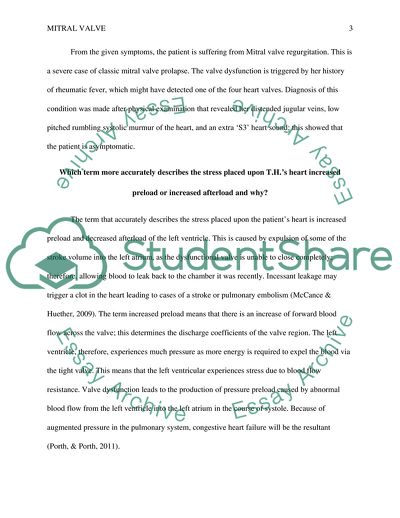Mitral Valve Assignment Example | Topics and Well Written Essays - 500 words. https://studentshare.org/medical-science/1821435-mitral-valve-regurgitation
Mitral Valve Assignment Example | Topics and Well Written Essays - 500 Words. https://studentshare.org/medical-science/1821435-mitral-valve-regurgitation.


